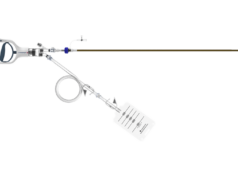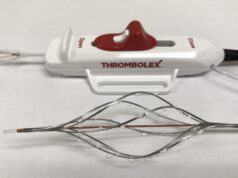
At the recent ISET meeting in Miami, Lowell Kabnick from Morristown, New Jersey compared the long term results of endovenous laser and endovenous RFA Therapy:“Controversy can begin with new and competing technology. Enter into the arena a gladiator and a worthy opponent: Radiofrequency (RF) vs. Laser therapy for the treatment of great saphenous vein incompetence”, said Kabnick. He emphasized that the move to minimally invasive procedures has been driven by industry and patients. “Minimally invasive procedures have been one of the drivers for manufacturers to develop devices for patient intervention. Because of the perception that less is better, the patients have looked or searched for physicians that perform these minimally invasive procedures, regardless of evidence based medicine. Most physicians have been slow to adopt these procedures while some have been quick to embrace.”
His presentation looked at data using minimally invasive devices which were approved as early as 1999 for the ablation of the saphenous vein. “There is enough data to conclude that the endothermal devices used to obliterate the saphenous system should be considered the benchmark for the treatment of saphenous insufficiency.
Analysis of three year RF data (company registry) revealed a cohort of 916 patients (1120 limbs) treated. Clinical results revealed reflux free greater saphenous vein at one year in 89% of cases (375/419), two years 88% (196/224), three years 86% (96/112), and four years 86% (62/72). Complications from RF treatment were pulmonary embolism 0.1%, DVT 1.0%, skin burns 0.8% (12/935), infection 0.2%, paresthesia at one week 12.3% at two years 4.9%. In single center reporting from the USA, efficacy results varied between 90%-97%.
Single center reports regarding laser treatment revealed greater saphenous vein closure rates from 93% to 99% with cumulative spawning one to four years. “My experience is quite similar using the 980nm laser. In 275 cases (4m-24m), I have a 96% reflux-free rate. In my cohort, there was one paresthesia, (disappeared in three weeks), three DVTs, no PE, skin burns or infections. Most patients had some degree of bruising which disappeared within two weeks, and the discomfort was controlled with an anti-inflammatory agent.”
Kabnick concluded that laser appears to be more efficacious in controlling venous reflux but RF causes less discomfort and bruising than laser. Laser, when used in the continuous mode, causes less bruising and discomfort than previously reported (pulse mode). RF is more complex to use in terms of set up, catheter-char accumulation, catheter cost, catheter pull back time and total procedural time. “Nonetheless, the above differences are real and physicians tend to make choices based upon information. It is my feeling that both modalities are a big advancement in the treatment of venous disease and should be the standard for the treatment of saphenous insufficiency”, said kabnick.









